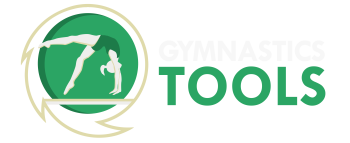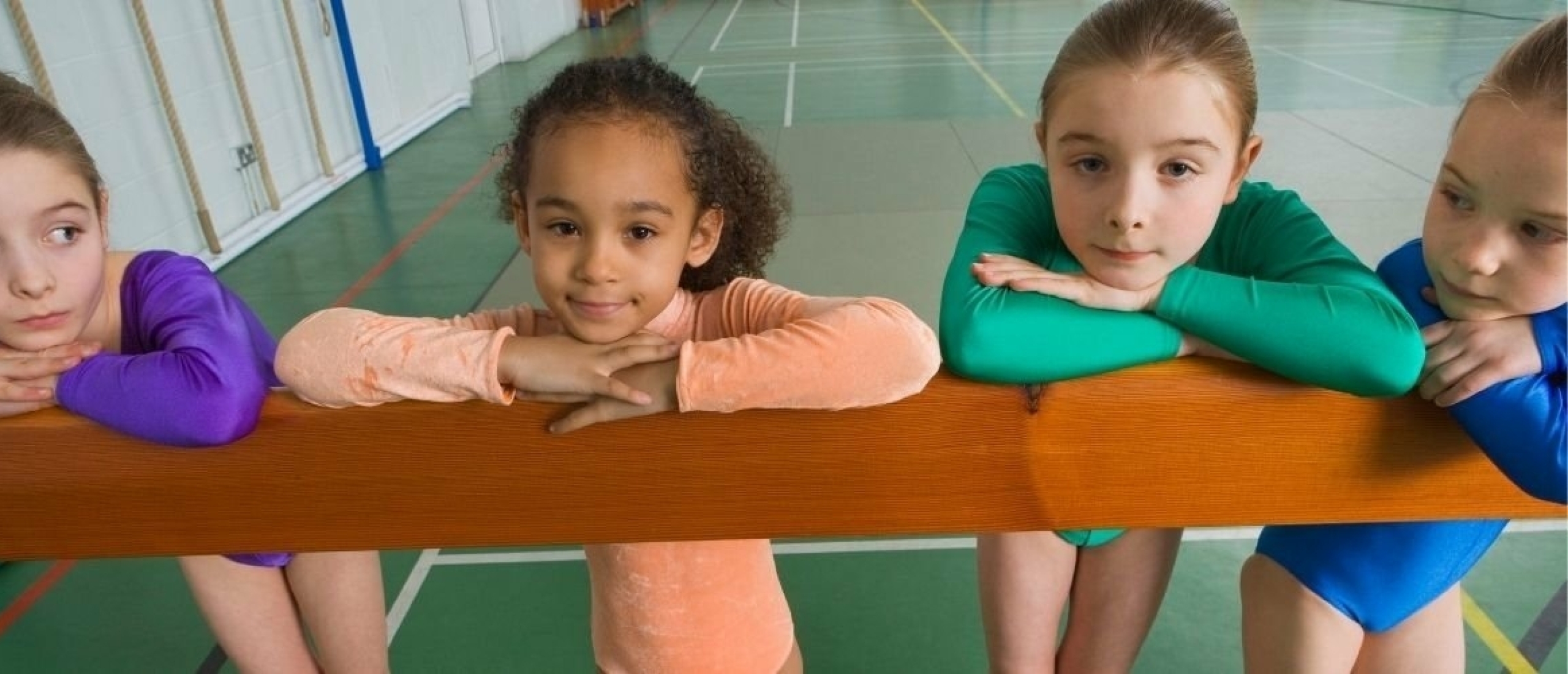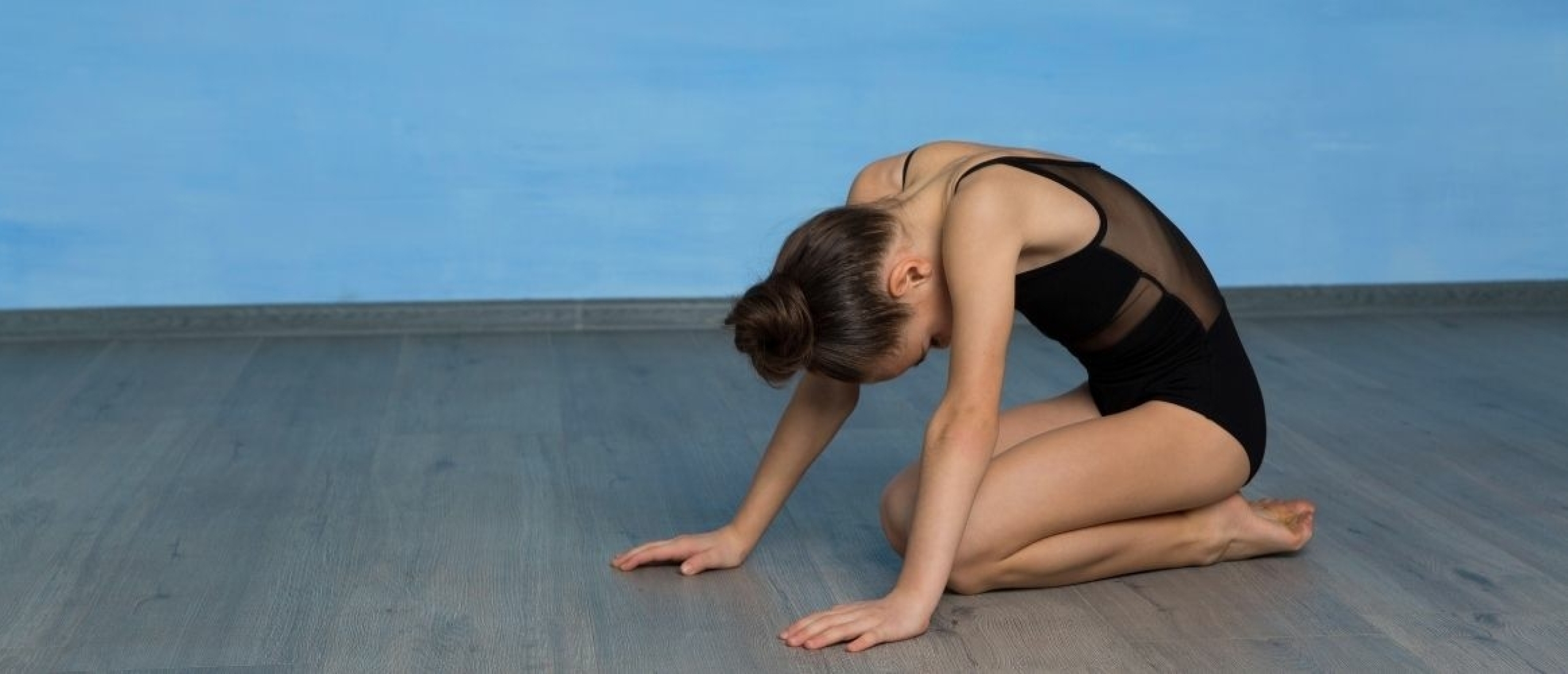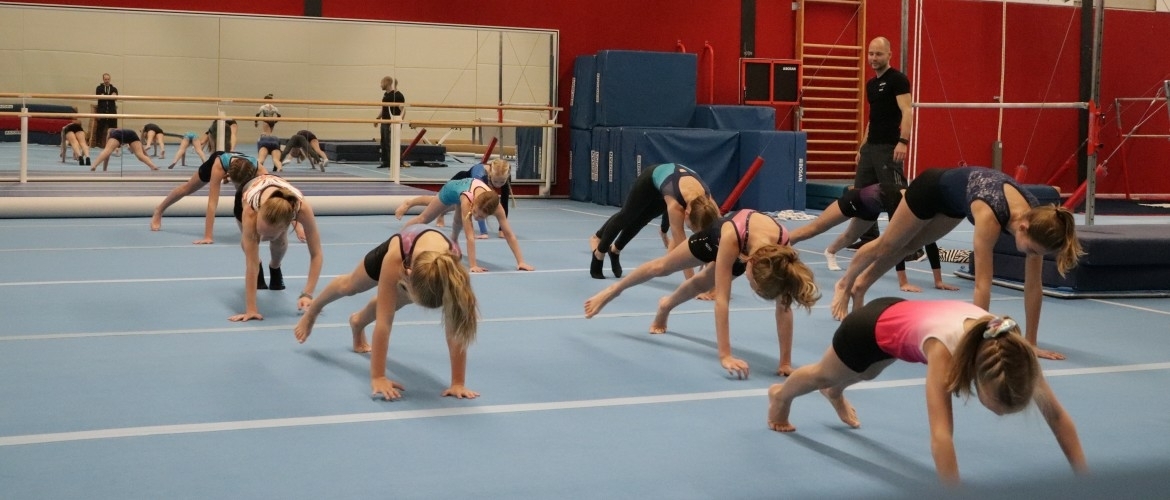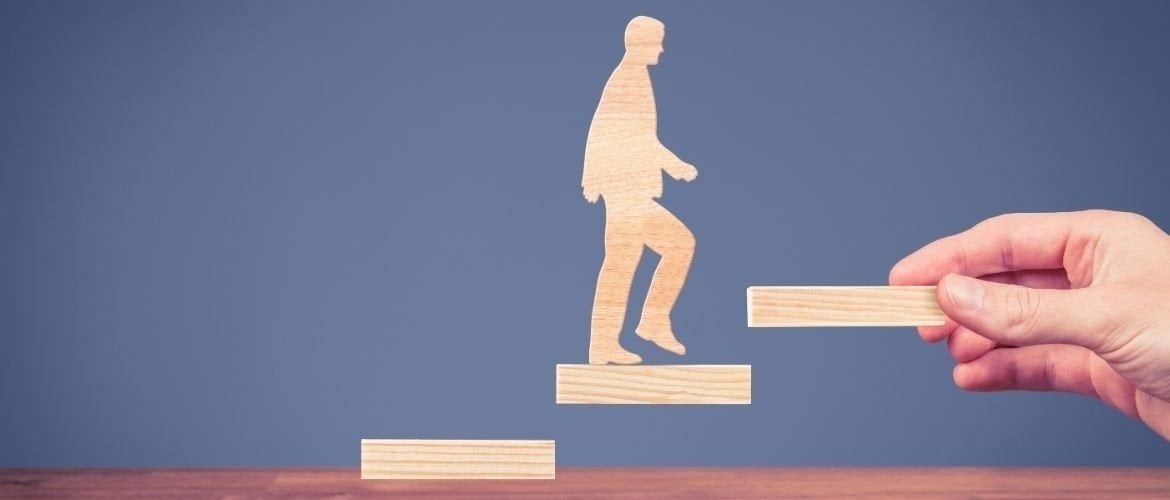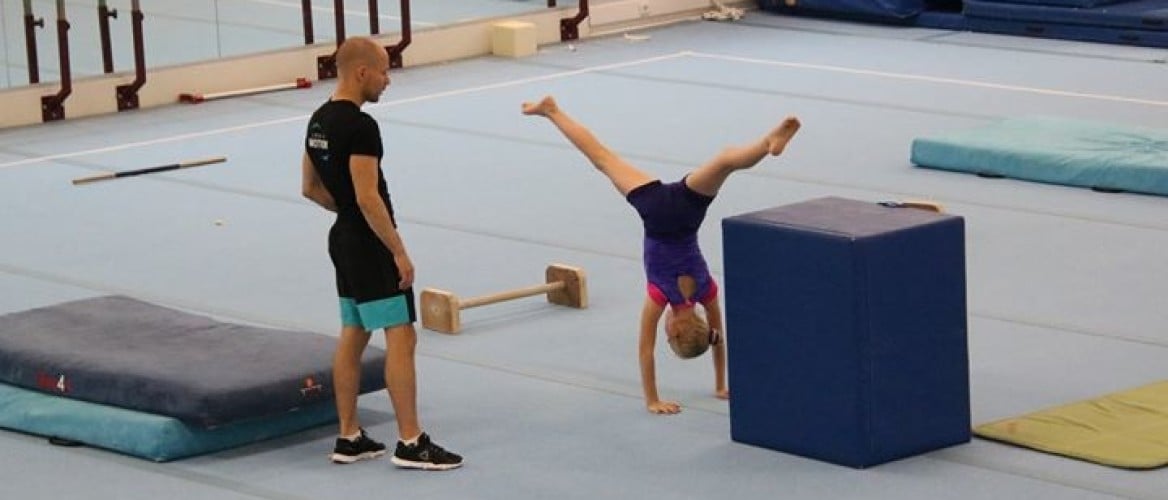Research shows that it works well to give the athlete so-called ‘self-direction’ over the learning process. This means that the athlete has a say in when he or she wants to receive feedback, which exercise forms the athlete wants to train and which instructions are to be followed. Of course there is some nuance in this. It does not mean that the athlete determines the entire training himself. That would make the gymnastics hall very confusing. In this blog, we outline an example situation and give useful tips to put more self-direction in the hands of the gymnast.
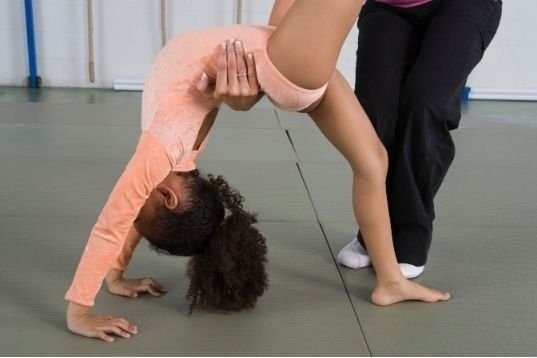
Example from practice
Eva is coach of a Pupil 2 D3 group. The competitions are coming up again and she wants to prepare her gymnasts as well as possible for the first preliminary competition. She is standing with a group of girls on the beam and they take turns in showing their exercises. Claire is the first to show her routine. Eva sees a few mistakes during the exercise and calls Claire: “Stretch your knee at the hover-stand”, “Come on, keep your arms straight at the running jump, there is no wind in the hall, is there? Keep tension in the pirouette”. After the exercise she calls Claire to her.
Claire, your exercise looked fine, but there are still some points to be made. During your exercise I already gave you tips about the hover, the jump series and your pirouette. You really miss the basic tension and therefore lose points on your bar score. That is a shame. In addition, your handstand should really be thrown up further and you should avoid extra steps on the landing. Go practise on the back beam for a while”. Claire is overloaded with tips and answers quietly ”yes teacher”. She is fed up with the performance and starts working hard with all the tips that teacher Eva gave. But… what were they all about? Something about the handstand, tension and steps in the landing. There are so many points that she still has to work on.
The coach as mediator and inspirator
The example outlined above is a common practical situation. Many coaches do not mince their words when giving feedback and think that this promotes the learning process of an athlete. After all, a sportsman learns by correcting mistakes, right? These coaches are constantly trying to steer and control the learning process of the athlete. That all control lies with the coach is a classic and almost outdated coaching method. I would like to explain the importance of the self-direction of the gymnast and emphasize a better role as a coach: the mediator and inspirator. Because to be constantly busy, providing athletes with feedback, preparing lessons and playing policeman when a gymnast skips a station is a waste of energy, isn’t it?
Self-direction in the learning process
In practice, it is often the case that the coach determines the learning process for the athlete. The coach sets up a lesson that must be strictly followed and is busy giving feedback and providing assistance throughout the lesson. According to research, it is more effective to let an athlete decide for him- or herself what kind of feedback he or she wants (the result or the execution) and at which attempt this is desired. Self-directed feedback leads to better learning results than externally imposed feedback, i.e. when a coach determines the feedback moment.
With self-directed feedback, i.e. self-direction, it turns out that less feedback is needed to learn a task. That is a win-win situation for the coach, right? It saves you energy and time! Another fun fact is that research has shown that in the case of self-directed feedback, the athlete requested feedback mainly after a successful attempt. Feedback on a successful attempt turns out to be more effective on the learning result than on a bad attempt. This is comparable to the fact that reinforcement of ”good and desired behaviour” is more effective than punishment of ”undesired behaviour”. The preference for receiving feedback on a successful attempt may be explained by the motivating effect; an athlete often wants confirmation that he/she is on the right track.
Experience success through self-management
The reason that an athlete tends to ask for feedback on a successful attempt may be due to the function of success experiences. After feedback on a successful attempt, the athlete experiences a success experience. This often contains a confirmation that the athlete is on the right track, which stimulates self-confidence. A higher degree of self-confidence correlates with a better performance. This can be explained by the fact that a high level of self-confidence often goes hand in hand with a lower level of anxiety and increased motivation and concentration (Burton, D., & Raedeke, T. D. (2008). (LINK article motivation)
Self-direction in the lesson plan
According to research, self-direction in the lesson plan also promotes learning performance. For example, let a sportsman decide for himself whether aids are needed when carrying out an assignment. In gymnastics, this can be difficult to place in the hands of a perfectionist young gymnast. If a gymnast thinks that she can make the kip herself and is still not on the stick after eight attempts, this can give a feeling of ‘failure’.
The black-and-white thinking that often accompanies perfectionism can then have a negative effect on learning performance. The kip is then only ”good” if it succeeds in its entirety (knowledge of result). The execution, on the other hand, can be better and better. The stabbing action is becoming brighter, the legs are stretched well. The feedback on the performance (knowledge of performance) does not count or is difficult to assess.
Knowledge of result: feedback about the result.
Knowledge of performance: feedback about the performance
All in all, a negative result based on overestimation or black-and-white thinking can lead to demotivation and therefore a poor learning result. Try to steer the success experience by setting up different stations (differential learning) or only setting up ”successful” stations. Do not offer a station in which they do the kip themselves, but let them do the kip with the help of a kip belt. Let the gymnasts choose for themselves whether they want to help with the kip by catching it.
Here are some examples of stations with partial movements for the kip, where a (nearly) guaranteed success is achieved:
The timing of giving feedback
Try to think about how and when you give feedback. For example, do you always give feedback after every turn? Then try to limit this to one or two tips per part per training session. After all, an athlete cannot pay attention to everything at the same time. Five different tips is also demotivating. At the beginning of this article, Claire received an awful lot of feedback, which ultimately prevented her from training purposefully. There were so many different tips that she actually got stuck, but she also completely lost control of herself. Try also to put the self-control actively in the hands of the athlete. Let them indicate when they want to receive feedback.
Knowledge of performance versus knowledge of results
Do you give feedback on the performance or the result? It is often unnecessary to give feedback on the result. An athlete understands that if he or she lands on the buttocks during a somersault, this is not good. On the other hand, an athlete may not realise that he or she is not kicking the heels fast enough. You don’t always have to give this feedback yourself; rely on the gymnast’s self-direction. For example, use footage as an option whereby the athlete can choose whether to watch this back after a turn.
Content of feedback
Also think about the content of the feedback. Are you aware of whether you explicitly or implicitly indicate what an athlete should change about the performance or the result? Is your feedback targeted or rather vague? An example is a frequently mentioned tip as also mentioned in the beginning of this article ”You have to strain more”. This is not really a clear tip for an athlete. It would be better to say that the athlete should stretch the knees (explicit feedback) or make the legs as long as possible (implicit feedback).
Responsibility as a coach
If you notice that after three times the feedback is still not taken up, don’t get frustrated with the athlete but put the responsibility on yourself. Coaches often get irritated when they don’t see a result after having told the athlete x number of times that he really has to make an effort. Try out different ways of giving feedback and see for each athlete what suits their learning method.
Feedback with a motivating effect
Positive feedback, as has already been said, has a motivating effect. When giving feedback, it is useful to use the sandwich method where you start with positive feedback, then give negative feedback and finish with something positive.
Self-directed learning method
In your lesson plan, try to create a sufficient frame in which the sportsmen themselves can ”colour”. In this way you create autonomy for the athlete, and you promote self-direction. An advantage is that this promotes the learning process of the athlete and that you yourself can leave more to the athlete which costs you less energy.
Training methods self-regulation
Examples of good learning methods are differential learning and error-free learning.
Differential learning has the advantage that you offer many different situations in which the athlete can look for the solution himself. An advantage is that variations in execution are possible so that there is no real ”right” or ”wrong”. The athlete can learn something implicitly in a discovering way. feedback is then less ”black” ”white”, is often more positive and is less often needed because difference in execution is part of differentiation. It is handy to let the athlete choose when feedback is desired, especially in differential learning.
Error-free learning and self-direction
Error-free learning is a method whereby you design and instruct exercises in such a way that they have to be done correctly. An example of this is learning to do a figure turn in a straight line. You can choose to have the cartwheel turn in an open space, or you can use error-free learning to set up a compelling situation. Have the athlete do the cartwheel between two mats in a vertical position. You instruct the athlete that he or she must not touch the mats. Feedback is also hardly necessary here; the athlete will notice when she is not going through a straight line. She then touches the mat.
Deployment of tools
Let the athlete decide on the use of an aid. Offer options such as the use of a kips harness or assistance from a teammate or you as coach. If it is not possible to perform the task properly without an aid, choose a learning situation without errors. For example, only offer the situation where the gymnast performs the kip in a kip harness. In this case, there is a good chance that the kip will succeed. This is easily measurable for the student as knowledge or result, so little feedback is needed.
Your role as coach within self-management
A final point to bear in mind when using a self-directed learning method is to take a supportive role. Ask your athlete open questions and do not fill in the blanks. What does the athlete think he or she needs in his or her learning process? What does the athlete need from the coach and from the group? Below are some examples of open questions.
- How did you find the turn itself going?
- What went well?
- Where could you work on?
- What can I help you with?
- What kind of exercise would you need to achieve your goal?
Finally
Hopefully this article will make you think about athlete autonomy. Compare the situations and tips from the article with your current teaching situation. Perhaps you have come to new insights about self-direction that you can implement in your lessons. In the end, this can have benefits for you as a coach, teaching can take less energy and you can better support your athletes in their learning process. Claire will be happy with fewer and more concrete tips. Maybe next time she will ask teacher Eva herself if she can get feedback on her exercise.
Do you want to train yourself as a coach in giving feedback? Then start with the refresher course “effective coaching“. Also take a look at our Youtube Channel for more inspiration!
Burton, D., & Raedeke, T. D. (2008). Sport psychology for coaches. Human Kinetics.
